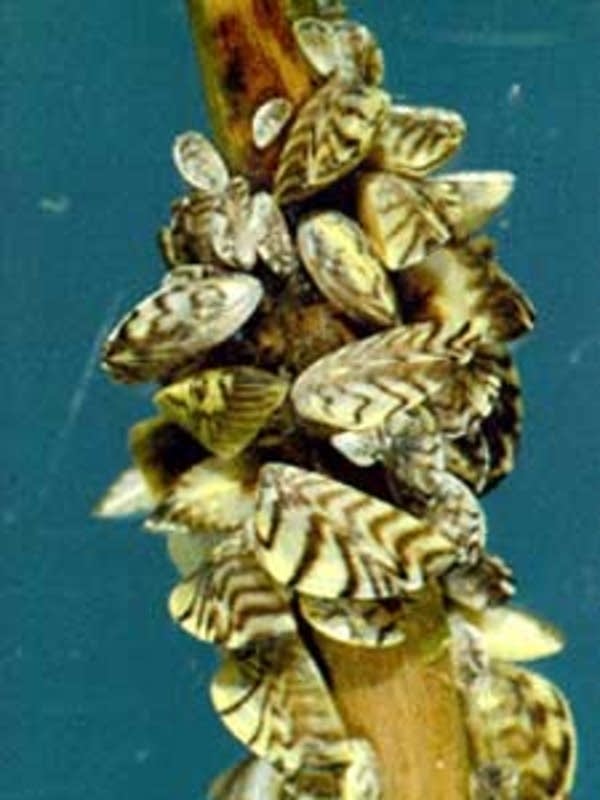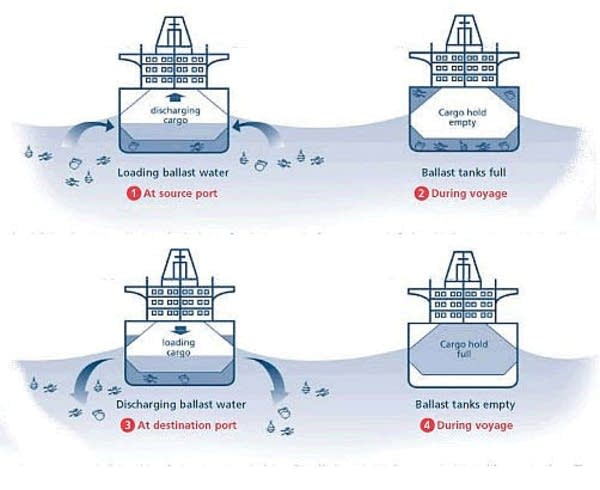New ballast water rules target invasive species

Every year, hundreds of ships slide under the Aerial Lift Bridge into the port of Duluth. They come from the oceans of Europe and Africa. They also come from Canada, and other ports on the Great Lakes.
These ships carry iron ore, grain, windmills, and sometimes -- like a giant floating aquarium -- they transport fish and other critters that don't belong in Lake Superior.
Researchers have found 88 non-native species in Lake Superior. With no natural predators, many of them thrive in their new home and quickly out-compete native species, threatening entire populations and throwing entire ecosystems out of balance. For example, lamprey and zebra mussels have changed the Lake Superior ecosystem forever.

Nearly half of those invaders arrived in ships -- often in the ballast water that ships carry to balance their loads.
Create a More Connected Minnesota
MPR News is your trusted resource for the news you need. With your support, MPR News brings accessible, courageous journalism and authentic conversation to everyone - free of paywalls and barriers. Your gift makes a difference.
As many as nine billion gallons of ballast water are discharged in Lake Superior each year, according to Henry VanOffelen, a scientist with the environmental group Minnesota Citizens for Environmental Advocacy.
The group took the Minnesota Pollution Control Agency to court to force it to start regulating those billions of gallons of water.
Congress has debated controls on ballast water for years, but has not taken action. So the group decided to push for rules on the state level.
The MPCA's plan starts by imposing "best management practices" for ballast water. They include banning ships from taking on ballast water in places where there's a known infestation of invasive species, and minimizing the amount of water used as ballast.
Then, by 2016, ships would have to have treatment systems on board, like the systems that treat city wastewater. They'd use technologies like filtration, ultraviolet radiation, ultrasound, and chemicals to kill the critters in the water before dumping it in the lake.

Henry Van Offelen says it's good the MPCA is setting some rules, but he thinks the agency is letting ships off the hook for too long before the rules take effect.
"The draft permit says that up until 2016 -- eight years from now -- we'll still allow billions and billions of gallons of untreated ballast water into the ports in Lake Superior," he said. "And the treatment standards they proposed are not high enough."
The MPCA plans to use standards laid out by the International Maritime Organization. Those standards allow a tiny number of living organisms to be discharged even after ballast water is treated.
California is working on standards that get progressively stricter, to the point of zero-detectable organisms discharged.
Shipping companies say Minnesota shouldn't get into the business of setting up rules about ballast water at all.
"As a vessel operator, if we go with a state-by-state approach, you could find yourself having to comply with different regulations in each state waters, and that's just going to be a compliance nightmare," said Glen Nekvasil, who represents 16 companies that operate ships only on the Great Lakes. "You could actually find yourself with conflicting requirements."
Nekvasil says the ships that stay in the lakes and never go out into the ocean aren't the problem. They don't bring in new invasive species.
"What we have to do is stop the introduction of new non-indigenous species, and that's a battle that has to be fought in the ballast tanks on ocean-going vessels," Nekvasil said.
But some invasive species are found in some lakes, but not others. For example, viral hemorrhagic septicemia -- VHS -- has been making its way from the eastern end of the lakes toward the west since 2003. A year ago the virus killed fish in Lake Michigan, but so far it hasn't been detected in Lake Superior.
The MPCA says the longer new exotic species can be kept out of Lake Superior, the more time it gives resource managers to figure out ways to control them.
The rules also change the way ships handle the sediment that accumulates in ballast tanks. Currently, once or twice a year ships use hoses to resuspend the sediment and dump it out in open water. Now, they'll have to dispose of the sediment on land, as solid waste.
If the MPCA Board approves the plan, the first phase, best management practices, goes into effect immediately.
